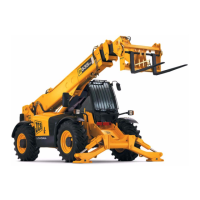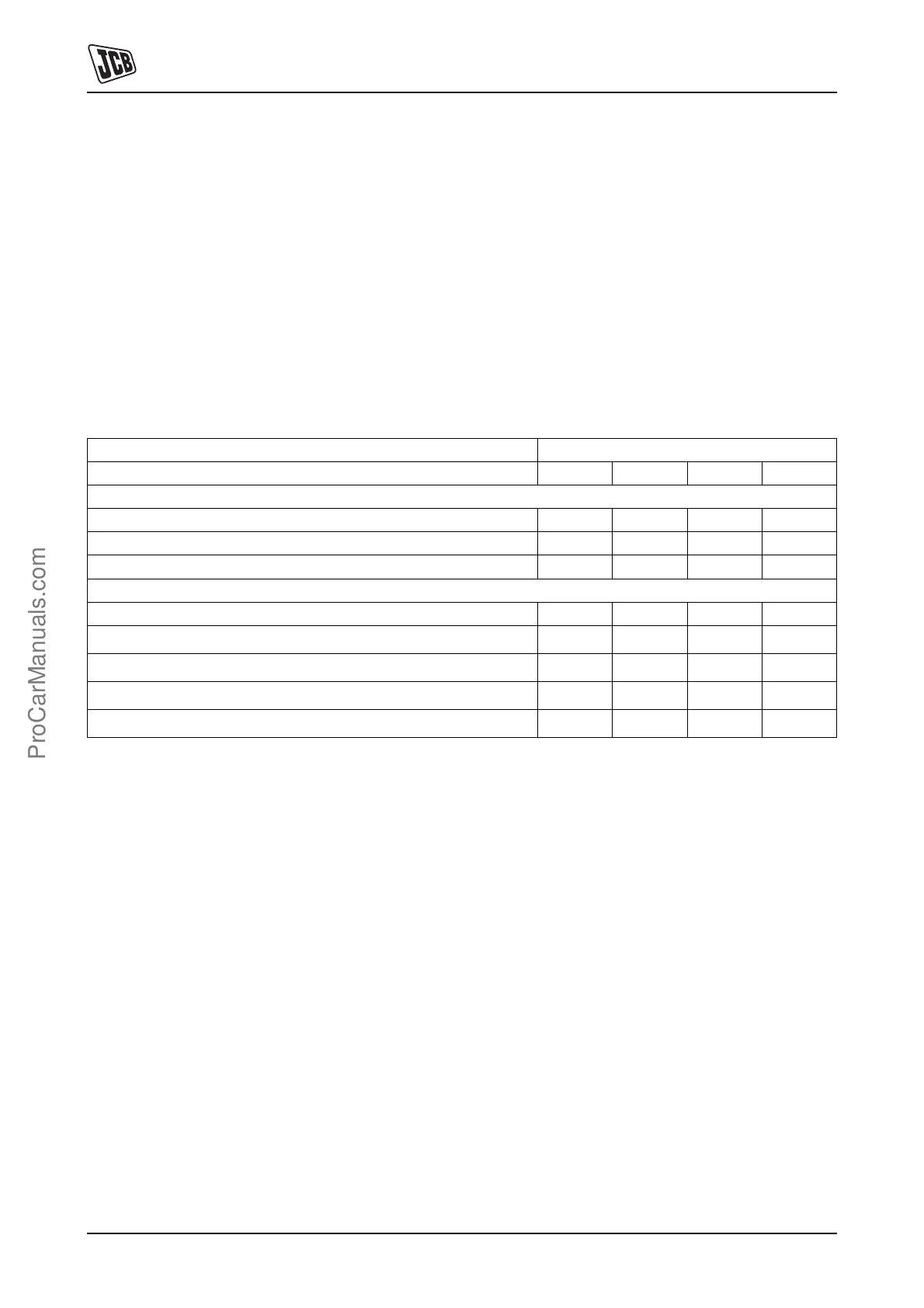Section 1-8 - General Information
Stall Speed Combinations
Specifications
1-8-3 1-8-3
9803/3750-05 (1-15-01)
Specifications
Tests carried out at the factory record the correct engine
r.p.m. (stall speed) when under maximum load from the
transmission and hydraulic systems.
The figures relate to tests conducted at an ambient of 25
0
C and barometric pressure of 100 kPa (sea level). Note
that changes in ambient temperature, pressure and
humidity and fuel grade will affect engine power and hence
the stall figures.
As an example, at 10,000 ft the power reduction of a
naturally aspirated engine could be 29% and for a turbo
engine 8%.
Note: The figures apply to `bedded-in' engines, i.e.
engines that have done a minimum of 250 working hours,
therefore they should not be used for pre-delivery
inspection (PDI) checks.
All figures are recorded with the transmission oil at 60°C
(140 °F) and the hydraulic oil at 55 °C (131 °F). Figures
achieved should be within +/- 100 rpm from the figures
given in the table.
Table 2.
Engine Build Code
SD SE SF SF
Engine Stall Speeds r.p.m.
Torque Converter Only 1820 2000 2000 2000
Hydraulics (M.R.V.) Only 2370 2350 2340 2340
Combined Converter + M.R.V.
(1)
(1) Combined stall tests are performed with the crowd service operated until the relief valve is lifted.
1300
(2)
(2) Make sure that the hydraulic oil temperature is 60 degrees C.
1725
1760
(2)
1760
(2)
Build Specification
Engine size:
85 h.p. (63 kW) Turbocharged
z
100 h.p (74 kW) Turbocharged and Intercooled
z
114 h.p. (85 kW) Turbocharged and Intercooled
z
130 h.p. (97 kW) Turbocharged and Intercooled
z
ProCarManuals.com

